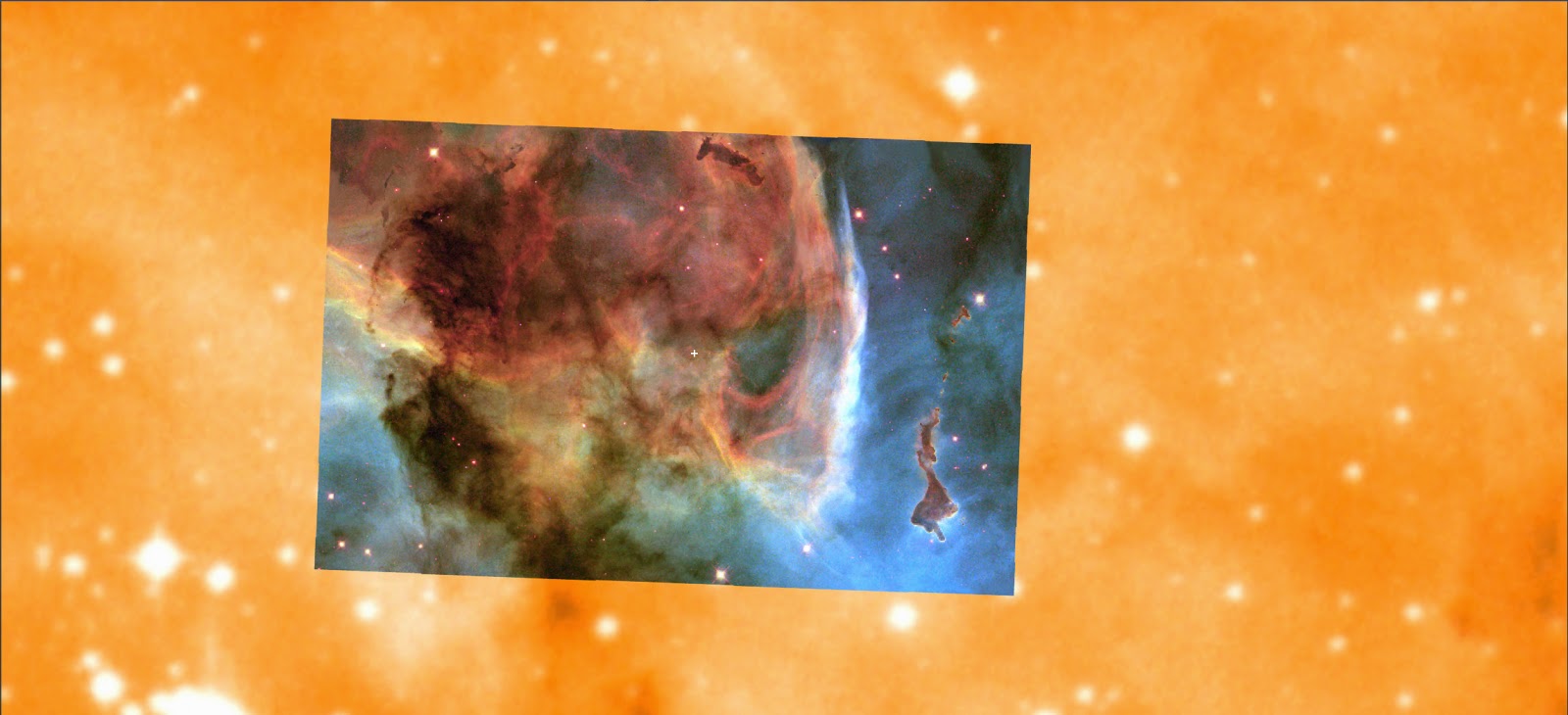| Carina Nebula : Hubble 2.2.2010 ( blue: oxygen glow ( green: hydrogen and nitrogen ( red: sulphur |
on carina nebula
Copyright NASA/ESA/M. Livio & Hubble 20th Anniversary Team (STScI)
Esa Space in Images: Wide View of ‘Mystic Mountain’
absolutly worthy seen the highres tiff :)
Hubble Space Telescope photograph
activity atop a pillar of gas and dust, three light-years high, absorbed by the brilliant light from nearby bright stars.
infant stars inside the pillar expulse jets of gas streaming from towering peaks.
Carina Nebula, 7500 light-years away, southern constellation of Carinaradiation and fast winds (streams of charged particles) from hot newborn stars in the nebula are shaping and compressing the pillar, causing new stars to form within it. Streamers of hot ionised gas can be seen flowing off the ridges of the structure, and wispy veils of dust, illuminated by starlight, float around its peaks. The pillar is resisting being eroded by radiation.
Nestled inside this dense mountain are fledgling stars. Long streamers of gas can be seen shooting in opposite directions from the pedestal at the top of the image. Another pair of jets is visible at another peak near the centre of the image. These jets are the signpost for new starbirth. The jets are launched by swirling discs around the stars, as these discs allow material to slowly accrete onto the stellar surfaces.
Hubble’s Wide Field Camera 3 observed the pillar on 1-2 February 2010. The colours in this composite image correspond to the glow of oxygen (blue), hydrogen and nitrogen (green) and sulphur (red). 20th anniversary of Hubble's launch and deployment into Earth orbit.












